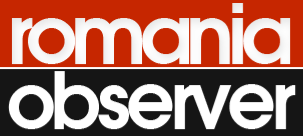The public administration sector's financial assets in Q1 2025 decreased by 1.1 percentage points to 25.7% of GDP, compared to the year-ago period, according to data published by the National Bank of Romania (BNR).According to the cited source, the trend was mainly generated by the decrease in the availability of cash and deposits, whose stock decreased (-9.1%) to 6.5% of GDP, in the political and economic context of the election period.Loans granted by public administrations increased (+2.4%) to 2.1% of GDP (down 0.1 percentage points compared to Q1 2024). Equity participations and shares/investment fund units remained at the same level of 9.8% of GDP. Other accounts receivable (taxes, social contributions, trade receivables, amounts owed by economic agents to public authorities, and external receivables) increased by 0.2 percentage points to 7.1% of GDP.Financial commitments of public administrations, expressed as a percentage of GDP, increased by 3.7 percentage points, reaching 60.4% at the end of Q1 2025."This development was mainly driven by the increase in debt securities (+2.8 percentage points during the period under review), to 41.2% of GDP, as a result of bond issues launched by the Ministry of Finance on the domestic and foreign markets to finance the budget deficit and refinance government debt," BNR points out.Committed government loans increased by 23.7% compared to Q1 2024, due to the issuance of non-negotiable retail government securities under the Tezaur program. In relative terms, the indicator increased by 1.2 percentage points to 8.8% of GDP.Other accounts payable reached 9.4% of GDP.The public administration sector's net financing requirement was 2% of GDP in Q1 2025, compared to 2.4% of GDP in Q1 2024. The central government recorded a net financing requirement of 2.3% of GDP (compared to 2.6% of GDP in Q1 2024). The local administrations' net financial requirement stood at 0.3% of GDP (0.2% of GDP in Q1 2024). Social security administrations recorded a net financing requirement of 0.04% in Q1 2025 (compared to 0.1% of GDP in Q1 2024).

